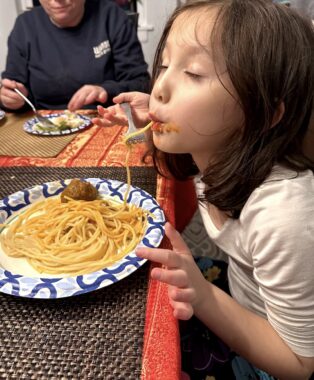Building muscle tone in a child who has AADC deficiency
Diet, play, and professional advice were the 3 prongs of our approach

When our daughter, Rylae-Ann, was diagnosed with aromatic l-amino acid decarboxylase (AADC) deficiency, my wife, Judy, and I were overwhelmed and unsure where to begin. Initially, our primary concern was survival. After she received gene therapy at 8 months old, we could finally ask the next big question: How do we help her get stronger?
I half-joked about feeding her burgers every day. Judy didn’t find it very funny and reminded me that turning our daughter’s medical care into a fast-food experiment probably wasn’t the best idea.
We knew hypotonia, or low muscle tone, was one of the major challenges for children with AADC deficiency. But even after gene therapy, we had no idea how hard it’d be to build muscle safely. It wasn’t just about protein shakes and pushups. It was about timing, therapy, nutrition, and most of all, teamwork.
So Judy (my brilliant, research-obsessed wife) and I dove into medical journals, case studies, and parent forums. What we learned is that muscle development in kids with rare conditions like AADC deficiency requires a customized, gentle, and consistent approach.
For us, the journey centered around three pillars:
- protein-rich diet
- play-based movement
- professional support.
Protein puzzle
Protein is essential for muscle growth, but it’s not as simple as serving up steaks.

Rylae-Ann devours a plate of spaghetti with protein-packed beef meatballs. (Photo by Richard E. Poulin III)
Rylae-Ann struggled with feeding early on, as she had weak mouth muscles, poor coordination, and fatigue. At one point, doctors recommended that a feeding tube be inserted. But with effort, we were able to build up her strength enough for safe swallowing.
When she was little, it was easier. Milk formula helped her gain weight and grow. But once she discovered the world of solid foods, formula was off the menu.
So we got creative. Judy became a master of sneaky nutrition: eggs melted into macaroni and cheese, Greek yogurt with berries and avocado, and tofu cubes simmered in beef broth. Basically, anything you’d find in a viral food clip online.
We also limited sugar, knowing it could spike energy levels and then cause a crash, something Rylae-Ann couldn’t afford while working on stamina. Easier said than done, of course, but worth it.
Play is her gym
One of our biggest breakthroughs was realizing therapy didn’t need to feel like therapy.
Movement is medicine, especially for children with hypotonia. And for Rylae-Ann, joy is a powerful motivator. She loved water play, music, colors, and textures. So we built obstacle courses with her toys, turned crawling into treasure hunts, and transformed bath time into hydrotherapy.
Eventually, our house became an indoor playground, and I became Rylae-Ann’s exhausted sidekick. Crawling beside her, panting while she laughed uncontrollably, I realized something: Motivated movement activates both the brain and body in ways repetition alone never could.
Asking for help
We’re not nutrition experts, but thankfully, others are.
After Rylae-Ann reached a plateau, we consulted with a dietitian, who created a personalized plan tailored to her unique needs. She emphasized amino acids, healthy fats, and slow-digesting carbs to support muscle development throughout the day.
Now, based on our medical team’s advice, we’re also exploring IV nutrition and vitamin injections. It’s a big step, but sometimes traditional approaches aren’t enough. I look forward to sharing that part of our journey soon.
If you’re starting and wondering whether cheeseburgers are the answer, you’re not alone. While burgers are delicious, building strength for our kids takes more than calories. It takes a healthy, balanced diet, active play, and a team of professionals who understand rare diseases.
In our house, each scoot, stretch, and giggle-filled jump is a milestone. Judy and I didn’t begin with the answers. We still don’t have them all. But together, with laughter, love, and a shared Google Calendar full of therapy, we’re not just building muscle; we’re building Rylae-Ann’s future.
Note: AADC News is strictly a news and information website about the disease. It does not provide medical advice, diagnosis, or treatment. This content is not intended to be a substitute for professional medical advice, diagnosis, or treatment. Always seek the advice of your physician or other qualified health provider with any questions you may have regarding a medical condition. Never disregard professional medical advice or delay in seeking it because of something you have read on this website. The opinions expressed in this column are not those of AADC News or its parent company, Bionews, and are intended to spark discussion about issues pertaining to aromatic l-amino acid decarboxylase deficiency.






Leave a comment
Fill in the required fields to post. Your email address will not be published.